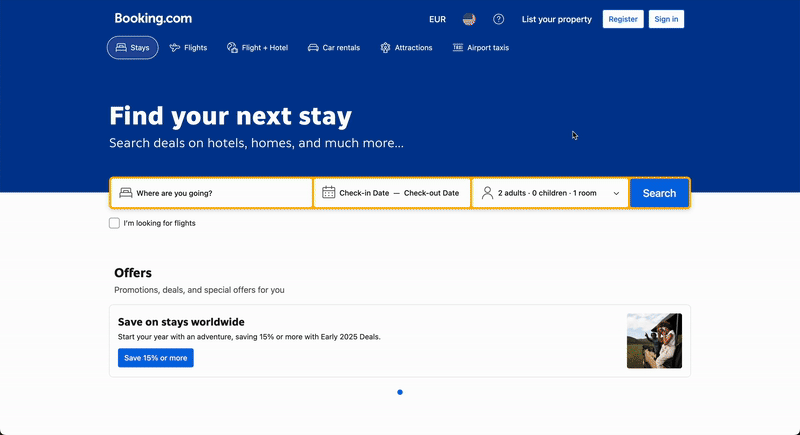O que significam os elementos de marcação de dados estruturados na Auditoria do site?
Para entender melhor o significado dos elementos de dados estruturados, vamos começar com os termos básicos.
O que são dados estruturados?
Dados estruturados se referem a um código criado usando o vocabulário de schema.org que ajuda as páginas do seu site a aparecerem nos resultados de pesquisa de uma maneira específica e muito mais avançada (pesquisa aprimorada ou Recursos de SERP).
Usando dados estruturados, você fornece ao Google informações detalhadas sobre o conteúdo da sua página. Como resultado, seu site pode ganhar resultados de pesquisa especiais – Recursos de SERP (Quais Recursos de SERP a Semrush pode rastrear?)
Por exemplo, uma página de receita com dados estruturados válidos pode aparecer em um resultado de pesquisa gráfica. Os usuários podem ver a imagem, os ingredientes, a quantidade de calorias e tempo de cozimento de uma receita sem visitar um site. Quando um site aparece em um resultado instantâneo, as pessoas ficam mais propensas a clicar no link da página.
.png)
Para poder aparecer na pesquisa aprimorada, você precisa:
- Adicionar um trecho de código do schema.org à página. Schema.org é uma grande coleção de exemplos de código. O Google usa alguns deles para extrair os dados relevantes do seu site e construir a pesquisa aprimorada (o Google define mais de 30 elementos de dados estruturados.) Por exemplo, Empresa local (detalhes da empresa, incluindo horário de funcionamento, classificações, como chegar) ou Produto (informações sobre um produto, incluindo preço, disponibilidade e classificações de avaliações), etc.
- Use um dos três formatos permitidos pelo Google, ou seja, uma das três maneiras de escrever um código: Microdados, JSON-LD ou RDFa. Esses formatos são usados para a marcação de dados estruturados.
- Forneça as propriedades necessárias para um elemento de dados estruturados de acordo com as diretrizes do Google. Adicionar mais propriedades recomendadas pode aumentar a probabilidade de suas informações aparecerem em pesquisas aprimoradas.
Função da Auditoria do site para marcações
Elementos de dados estruturados
A ferramenta Auditoria do site pode explorar os elementos de dados estruturados para cada URL e identificar quais páginas poderão aparecer na pesquisa aprimorada.
Vamos supor que você tenha notado que um concorrente seu está te superando em um Recurso de SERP. Agora, você precisa verificar se a marcação está implementada na sua página.
Nos Filtros avançados, selecione “Elementos de dados estruturados” e escolha os elementos que você gostaria de verificar.

Nos resultados filtrados, navegue até a coluna Dados estruturados (se estiver oculta, selecione a coluna no menu Gerenciar colunas para adicioná-la) e verifique se os elementos implementados na página são válidos.
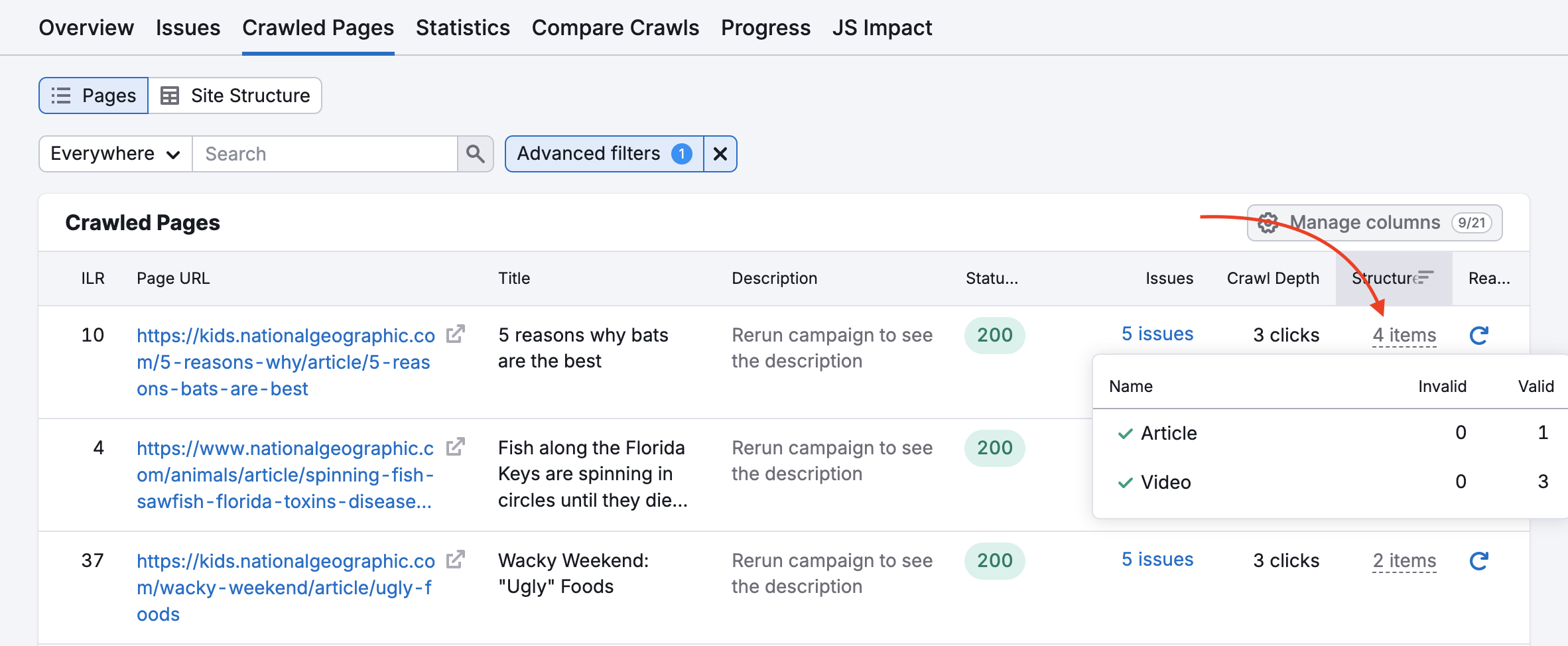
O Semrush reconhece elementos de dados estruturados nos formatos Microdados e JSON-LD. Os elementos RDFa de Schema.org são menos utilizados e, no momento, não temos suporte a eles. Para validar o RDFa, recomendamos usar a ferramenta Teste de pesquisa aprimorada.
A Auditoria do site identifica a maioria dos elementos de dados estruturados de nível superior definidos pelo Google, excluindo aqueles em fase beta ou com acesso limitado.
Observação: nossa ferramenta não reconhece propriedades que foram definidas usando o atributo itemref. O Google Bot consegue identificar essas propriedades, então verifique isso com a ferramenta Teste de pesquisa aprimorada.
Verificação de objetos de dados estruturados
Há dois tipos de verificação:
- Que não há campos que não estão descritos em schema.org
- Que todas as propriedades exigidas de acordo com a documentação do Google estejam presentes
Relatório temático
O relatório temático é um bom ponto de partida para analisar o que está presente e o que está faltando no site:
- Verifique em quais recursos de SERP o site não consegue rankings (você pode fazer isso no Monitoramento de posição ou na Pesquisa orgânica).
- Use a Auditoria do site para verificar se a marcação necessária foi adicionada e é válida.
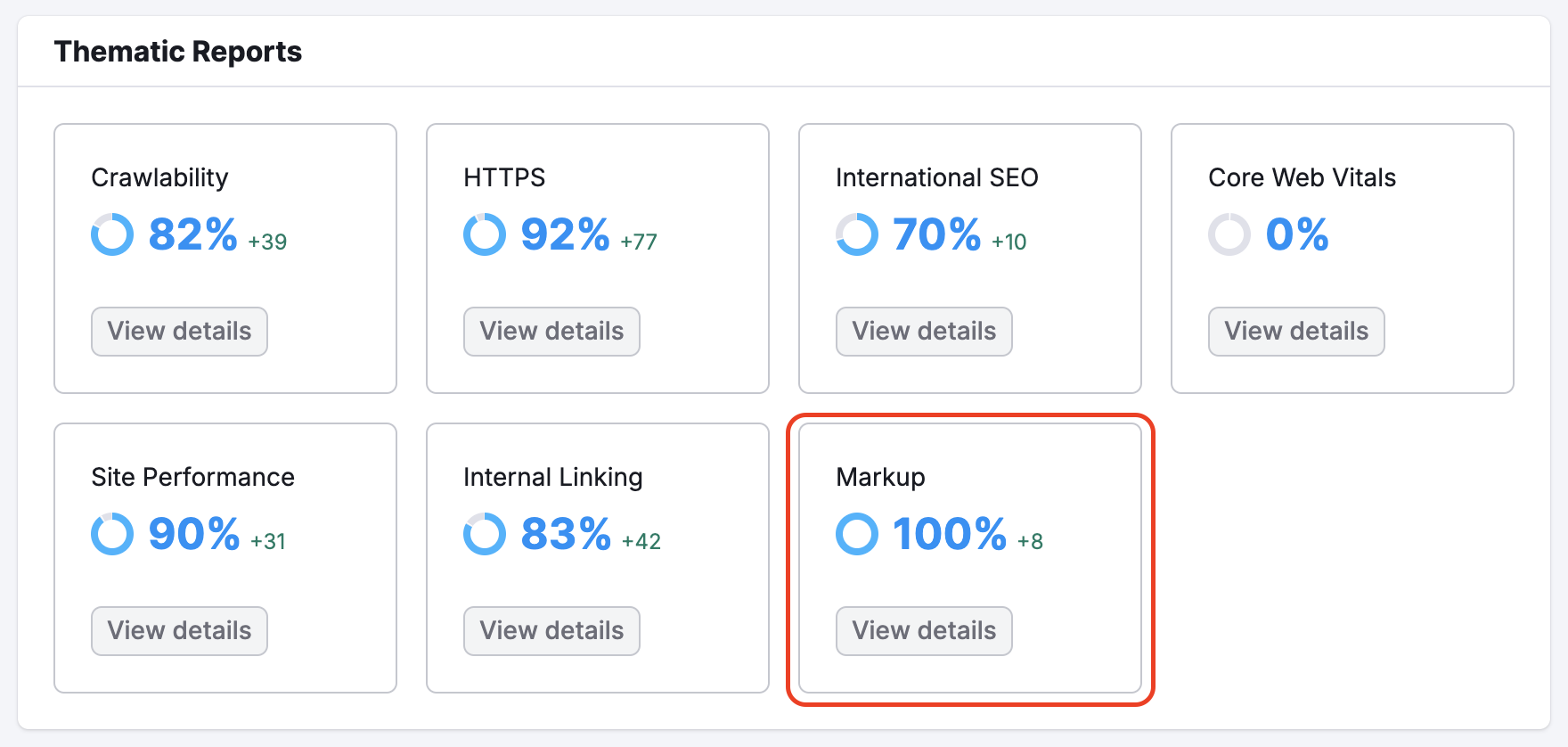
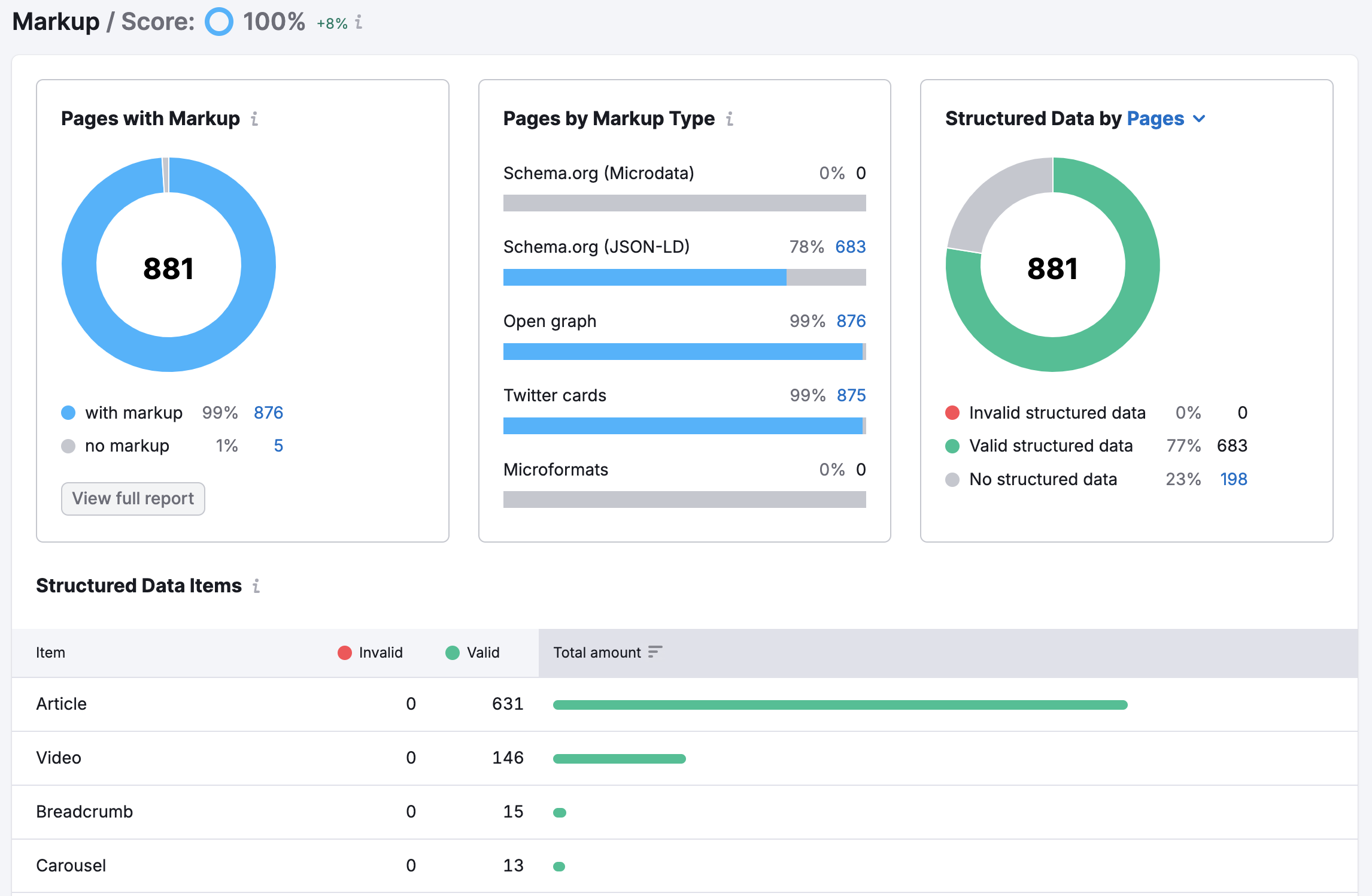
Quais elementos de dados estruturados a Auditoria do site reconhece?
Atenção: usamos o mesmo vocabulário que o Google, mas ele pode diferir do vocabulário de schema.org. Confira abaixo a lista de todos os elementos de dados estruturados disponíveis na Auditoria do site e como eles são indicados em schema.org:
| Item de dados | @type em schema.org |
|---|---|
| Artigo | NewsArticle or BlogPosting or Article |
| Livro | Book |
| Navegação estrutural | BreadcrumbList |
| Carrossel | ItemList |
| Curso | Course |
| Anúncios da COVID-19 | SpecialAnnouncement |
| Conjunto de dados | Dataset |
| Avaliação agregada de empregador | EmployerAggregateRating |
| Salário estimado | MonetaryAmountDistribution |
| Evento | Event |
| Checagem de fatos | ClaimReview Claim (em breve) Rating (em breve) |
| Perguntas frequentes | FAQPage |
| Como fazer | HowTo |
| Anúncio de emprego | JobPosting |
| Empresa local | LocalBusiness, incluindo 148 tipos específicos |
| Logotipo | "@type": "Organization" e tem o campo "logo": |
|
Filme |
Movie |
| Informações do produto do comerciante | Product |
| Organização | Organização |
| Produto | Product |
| Grupo de produtos | ProductGroup |
| Snippets de produto | Product |
| Perguntas e respostas | QAPage |
| Receita guiada | Recipe |
| Receita na pesquisa | Recipe |
| Snippet de avaliação | Review AggregateRating |
| Caixa de pesquisa de sitelinks | WebSite com potentialAction: [{ @type: "SearchAction" |
| Nomes de sites | WebSite |
| App de software | SoftwareApplication |
| Anúncios de veículos | Vehicle |
| Vídeo | VideoObject |
Observação: os elementos de dados estruturados que aparecem após a renderização do código JavaScript (como o fornecido pelo Gerenciador de tags do Google) serão reconhecidos somente se a renderização JS estiver ativada.
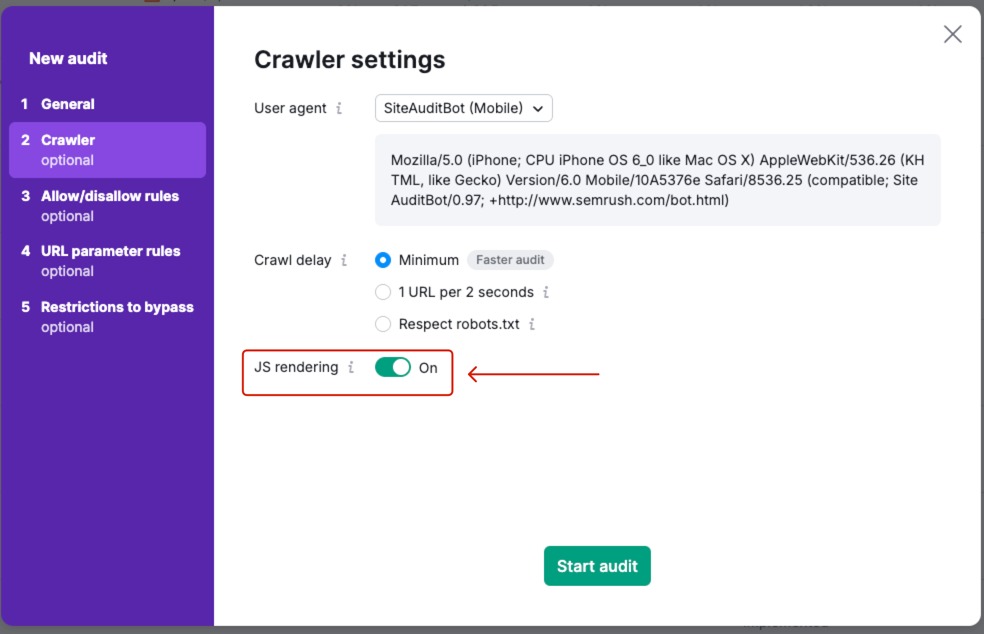
Essa função está disponível somente nos planos de Kit de ferramentas de SEO Guru e Business.
Para validá-los, abra a página em um navegador –> clique em “Ver código-fonte da página” –> copie o código da página –> cole o código na ferramenta Teste de pesquisa aprimorada.
